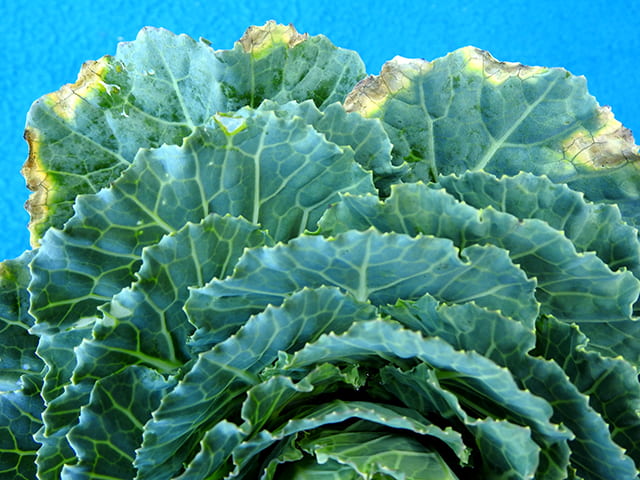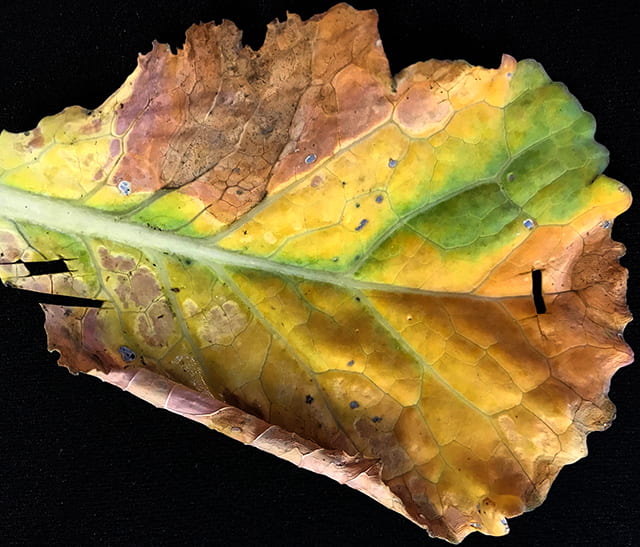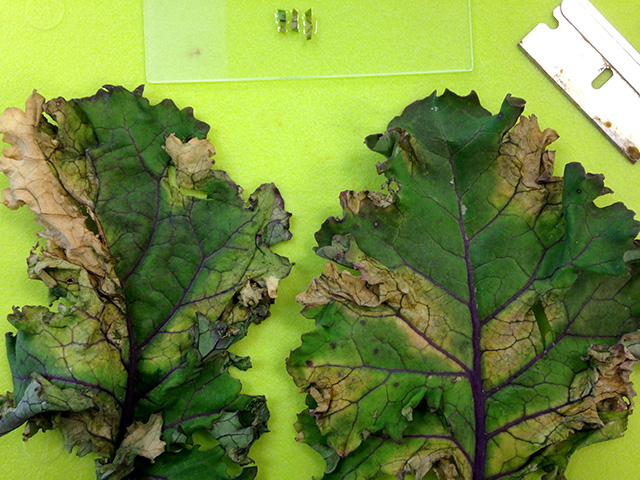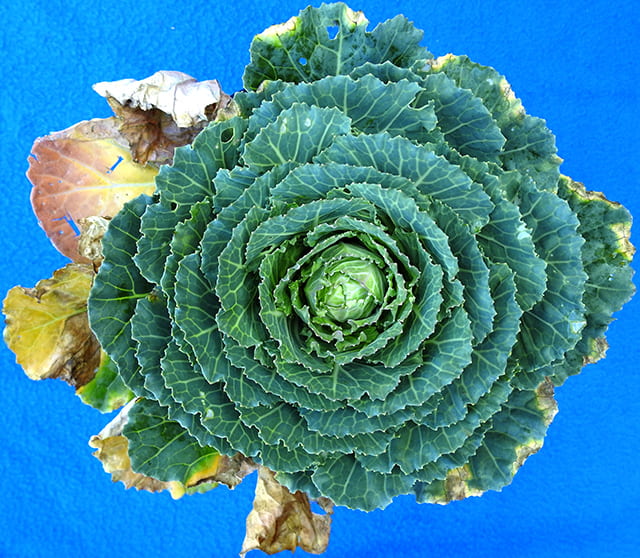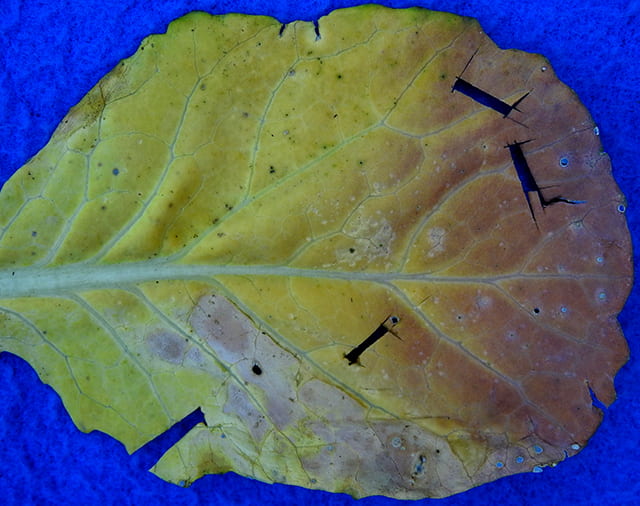In 2014 there were several occurrences of black rot affecting kale growing in pots for ornamental use on Long Island. Contaminated seed was concluded to most likely be the source of the pathogen. Symptoms resembled those associated with systemic infection. Plants were being grown by ornamental producers who had not seen black rot before, thus there was not a known on-farm source such as contaminated plant debris. Most plants were receiving in-pot trickle irrigation, thus there was limited opportunity for spread of bacteria via splashing water into the planting, in particular for plants in plantings that were in a greenhouse protected from rain. Affected plants had diagnostic black veins visible in the petioles and leaves, and diagnostic bacterial streaming was observed from veins in leaf pieces.
A greenhouse-grown ornamental cabbage was submitted for diagnosis in September 2019. Six photographs taken of it follow the kale images below. The v-shaped yellow lesions extending from the leaf margin with black veins are the classic symptom of black rot. Dying older leaves the grower wondered if indicated nutritional imbalance, but there was slight blackening of some veins and diagnostic bacterial streaming was observed from veins in all leaf pieces removed from these leaves and examined under a compound microscope, therefore they were dying because of black rot.
Where found affecting only a few plants being grown in pots, discarding those plants is recommended to minimize opportunity for spread by workers handling plants.
See black rot on cabbage for more information and photographs.
Following six images are of ornamental kale affected by black rot in 2014.
Following six images are of ornamental cabbage affected by black rot in 2019.
